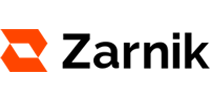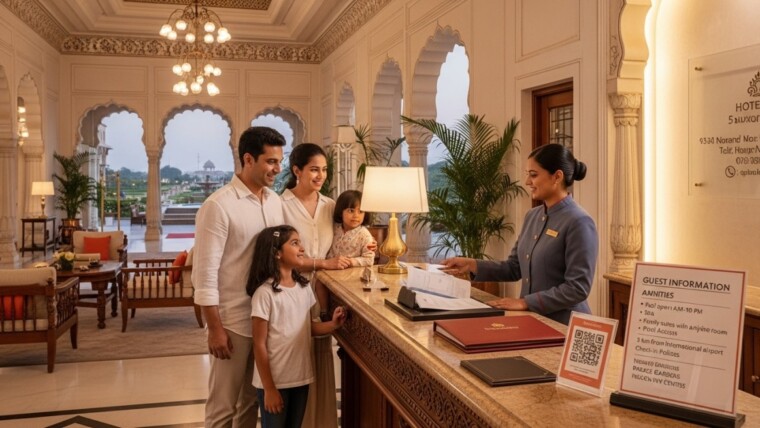In the intricate landscape of the hospitality industry, a name is often the first handshake between a hotel and its guest. But how does one encapsulate an entire brand’s ethos into a singular name? Delve into the 3D Framework for Hotel Branding—a methodology that isn’t about graphics, but rather about depth, dimension, and dynamism in naming.
The Three Tiers of Naming
Within hospitality, naming splinters into three decisive layers:
- Company
- Brand
- Property
Each has its distinct strategic weight and influence on a guest’s perception and experience.
Company Name: The Umbrella Identity
Imagine the company name as the grand tree, with various brands and properties as its branches. This title is the foundation, often less visible to guests but paramount for B2B interactions, partnerships, and corporate identity.
Considerations:
- Broadness: Names like ‘Marriott International’ resonate as they’re expansive, accommodating diverse brands beneath them.
- Longevity: Aim for a title that remains pertinent across expansions or pivots.
- Legacy and History: Leveraging roots can provide a rich tapestry of stories, whether they reflect founders, missions, or inspirational journeys.
Brand Name: The Heart of Your Hospitality Venture
This is where the magic lies for guests. Their memories, whether of luxurious stays or sumptuous meals, tie back to this title.
Considerations:
- Short and Concise: Names like ‘Ritz’ linger in memory because of their brevity and impact.
- Domain & Trademark Availability: Securing a unique digital footprint and legal protection is paramount.
- Values & Ethos: A brand like ‘Four Seasons’ promises excellence year-round, resonating with its core values.
- Digital Presence: It’s vital the name shines brightly in the vast expanse of the internet, from search engines to social media.
Property Name: Personalizing the Guest Experience
This is where the global brand promise marries a local flavor.
Here’s where we see a myriad of naming conventions, each tailored to specific branding goals:
- Integrated Naming: E.g., ITC Maratha Mumbai – A blend of brand, property identifier, and location. In this instance, “Maratha” serves as the property identifier, chosen specifically to resonate with the cultural and historical nuances of the location. E.g., Hyatt Regency Thrissur – A blend of brand, property identifier, and location. Here, “Regency” is the property identifier under the Hyatt brand, and “Thrissur” denotes the location. The choice of “Regency” is a consistent identifier across many of Hyatt’s properties, whereas the specific city or locale name adds the geographical context.
- Integrated Locale-Infused Naming: E.g., Xandari Pearl Beach Resort Mararikulam – Merging the parent brand with a locale-infused descriptor to offer guests a holistic picture of the property’s ambiance and geographical essence.
- Sub-brand Highlighting: E.g., Courtyard by Marriott Kochi Airport – The parent brand remains subtle, emphasizing the sub-brand and location.
- Silent Parent Branding: E.g., Ibis Kochi City Center – The main brand ‘Accor’ remains unmentioned, letting the sub-brand ‘Ibis’ take the forefront with the location.
- Brand-Location Naming: E.g., Ginger Goa, Panjim – Directly links the brand and location, prioritizing clarity.
- Standalone Naming: E.g., Eighth Bastion – Owned by the brand CGH Earth, this approach spotlights the property, letting its unique identity shine without appending the parent brand.
Considerations:
- Geographical Significance: “Radisson Beach Resort Goa” evokes images of sun, sand, and sea.
- Target Audience: Properties like “Westin Business Hub Tokyo” clearly cater to corporate travelers.
- Local Culture & History: Infusing local elements, like “Hyatt Regency Maharaja Jaipur”, can create a richer guest narrative.
The Power of Location in Naming
One key element to underscore in all the above naming styles is the consistent inclusion of the location.
Specifying the location offers several benefits:
- Immediate Context: For potential guests, the location provides instant clarity about the hotel’s geographical setting, helping in decision-making.
- Search Engine Optimization (SEO): Including a location can improve search rankings when potential guests look for accommodations in a specific city or region.
- Brand Diversification: It allows a brand with multiple properties to clearly distinguish between them, especially when they share a common property identifier, like “Regency” in Hyatt’s case.
- Local Resonance: It helps in building a connection with the local community and culture, establishing a sense of belonging and authenticity.
- Strategic Marketing: Location-specific naming aids in targeted marketing campaigns, especially when promoting local events, festivals, or attractions in proximity to the hotel.
By weaving the location into the name, brands ensure a richer, more informative, and strategic representation for their properties.
Don’ts When Naming Your Property in Hospitality
- Steer Clear of Overused Terms: Avoid words like “luxury”, “elite”, or “premier”. They are commonly used and can dilute your brand’s unique essence.
- Skip Redundant Descriptors: Refrain from using terms like “hotel”, “resort”, etc., in the name. It’s often evident from the context, and such terms only consume space without adding value.
- Steer Clear of Generic Names: Avoid names like “City Hotel”, “Comfort Inn”, or “Destination Stay” that easily blend into the background. Your chosen name should stand out and capture the spirit of your brand.
- Over-Adjectival Names: Names like “Grand Deluxe Luxury Suites” use multiple adjectives to convey quality but can come off as inauthentic and overly promotional.
- Trendy Buzzword Naming: In an attempt to appear current, some hotels might have once used buzzwords or phrases that quickly became dated. Examples might include terms like “Cyber Inn” in the dot-com era or “Y2K Suites” around the turn of the millennium.
- Numeric Naming: Using numbers as a primary feature in a hotel’s name (e.g., “Hotel 21” or “Resort 360”) was trendy at one point, but without a clear context or story behind the number, it can seem generic and lack personality.
Stakeholder Involvement at Each Tier
Crafting a name isn’t a task for one. It’s crucial to tap into the insights of hotel owners, managers, and even ground-level staff. Their feedback, derived from guest interactions and local nuances, can be invaluable, ensuring names resonate on all fronts.
Legal & Digital Due Diligence
Protecting your chosen names is as vital as selecting them. Screening for trademark availability ensures you’re safe from potential legal hiccups. Simultaneously, in our digital age, the right domain name aids in branding, SEO, and giving your venture a distinctive online presence.
Conclusion
The art of naming in the hospitality sector is a layered affair, demanding a blend of strategy and creativity. The journey might be intricate, but the outcome is a harmonized brand identity that leaves an indelible mark on partners and guests.








Essential Diversey Chemicals: A Guide for R1 to R9 TASKI Series
How to Respond to Guest Reviews with 10 Samples
Different Types of Paper Napkins for Restaurants
Top OTAs in India: Complete 2024 Guide for Hoteliers
Guest Reviews: The Hidden Force Behind Bookings